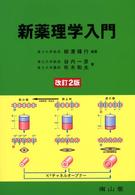- ホーム
- > 洋書
- > ドイツ書
- > Mathematics, Sciences & Technology
- > Technology
- > electronics, electrical engineering, telecommunications
Description
(Text)
The common salient characteristics behind the design of UWB antennas have been investigated for different classical and modern wide band antennas. Several new UWB antenna have been designed in this book by following various methods. Some of these antennas have been designed through developing the impedance matching (IM) techniques. Other antennas have been designed by applying the self-complementary or constant impedance principle via proposing suitable feeding configuration that enabled efficient application of this principle. The fractal geometry has also been utilized. All designed antennas have been simulated using CST Microwave Studio package, and some of the designs were also analyzed by the HFSS software package for further verification. Among the designed antennas; a circular monopole, and three versions of the self-complementary dipoles having circular, bow-tie and fractal bow-tie shapes were fabricated and examined experimentally inside an anechoic chamber for radiationpattern and reflection coefficient measurements. The experimental data verified the simulation results.







